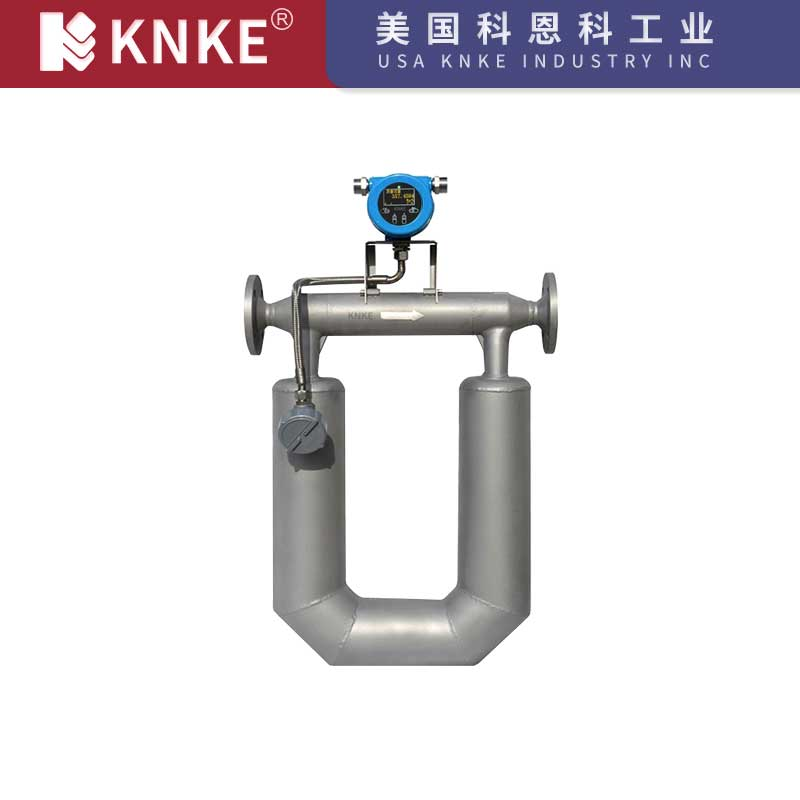Mass Flow Meter Installation Requirements: Key Rules & Tips for Accurate Measurement
Mass flow meters are essential for metering in industries like chemical engineering, energy, and water treatment. They measure fluid mass flow directly and work well in complex conditions. But you must note: proper installation of a mass flow meter directly affects its accuracy, service life, and production safety. This article uses industry standards and real experience to break down mass flow meter installation rules. It helps you avoid mistakes and keep metering stable.

I. Before Installing a Mass Flow Meter: 3 Core Prep Steps (Don’t Skip Any)
Pre-installation checks stop future problems. Focus on three areas: compatibility, parameters, and pipe diameter.
1. Check Medium Compatibility to Avoid Equipment Damage
The mass flow meter must match the pipeline’s fluid. Focus on three key parameters:
- Corrosion resistance: For corrosive media (like hydrochloric acid or sodium hydroxide in chemicals), use meters made of 316L stainless steel or Hastelloy. This prevents housing or sensor corrosion.
- Temperature range: Make sure the fluid’s working temperature fits the meter’s rating. Regular models handle -20℃~120℃. For high temps, use a specialized high-temperature model. This stops sensor failure from overheating.
- Pressure rating: The fluid’s actual pressure must be lower than the meter’s max working pressure. For example, a PN1.6MPa meter won’t work in a 2.0MPa pipeline. This prevents safety risks from overpressurization.
2. Verify Meter Parameters to Match Your Needs
Check each parameter before installation to fit your production scenario:
- Flow range: The meter’s range should cover your actual flow. We recommend keeping actual flow between 30% and 80% of the range. For example, if your pipeline flows 5m³/h, choose a 0~15m³/h range. This avoids overload (too small a range) or poor accuracy (too large a range).
- Measurement accuracy: Pick an accuracy class based on industry needs. Use 0.2 class for metrological trade and 0.5 class for process monitoring.
- Communication interface: Ensure the meter’s 485 or HART interface works with your control system. This lets data transmit in real time.
3. Match Pipe Diameter to Keep Fluid Stable
The meter’s nominal diameter must match the pipeline’s. For a DN50 pipeline, use a DN50 meter. If diameters differ, use a reducer pipe. The reducer needs to be at least 5x the pipe diameter long upstream and 3x downstream. This stops turbulence from diameter changes, which harms accuracy.
II. Straight Pipe Length for Mass Flow Meters: Follow Rules to Avoid Turbulence
Straight pipe length greatly impacts the meter’s accuracy. Rules vary by meter type, but these core tips apply:
- General rule: Most meters (like Coriolis mass flow meters) need 10x the pipe diameter of straight pipe upstream and 5x downstream. If the pipeline has valves, elbows, or pumps, extend the straight pipe. For example, add 20x the pipe diameter upstream after a valve.
- Special cases: Some compact meters allow shorter straight pipes. Always check the product manual. One brand’s Coriolis meter, for example, only needs 3x the pipe diameter upstream.
- Don’t do this: Never install the meter with too little straight pipe. Fluid rotation and eddies will boost errors—from 0.5% up to 5% or more.
III. Mass Flow Meter Installation Orientation: Follow the Meter Type
Orientation depends on the meter type. Wrong orientation breaks measurement:
- Coriolis mass flow meters: They work for horizontal or vertical installation. For vertical setups, fluid must flow from bottom to top (to stop air buildup). Keep the sensor away from vibration (like pumps). Install shock-absorbing brackets if needed.
- Thermal mass flow meters: Install horizontally if possible. For vertical setups, point the probe downstream. This stops impurities from piling on the probe.
- Don’t do this: Never install the meter upside down (it damages parts). Don’t put it at the pipeline’s highest point (air builds up) or lowest point (slag piles up).
IV. Installing for Complex Conditions: 3 Tips for Stable Operation
Mass flow meters work in tough conditions, but you need to adjust installation:
- High-viscosity media (crude oil, syrup): Use a large-diameter meter. Clean pipeline impurities before installation to stop sensor clogs.
- Fluctuating pressure (compressor outlets): Install a pressure stabilizer upstream of the meter. This reduces pressure swings’ impact on measurement.
- Low/high temps: For temps below -40℃, use low-temperature-resistant materials. For high temps, add insulation. This stops the instrument housing from overheating.
FAQ: Common Mass Flow Meter Installation Questions
- Do I need to calibrate a mass flow meter before installation?
New meters come calibrated from the factory. You don’t need to recalibrate them. But check if the calibration certificate is still valid. - What if I install a Coriolis mass flow meter the wrong way?
Measurement data will be off. In bad cases, parts will wear—because fluid flow doesn’t match the sensor’s design. - Do air bubbles in the pipeline affect installation?
Yes. Install an exhaust valve upstream of the meter. Remove bubbles before installing the meter. This stops bubbles from interfering with the sensor.
Conclusion
The meter’s installation quality determines its performance and lifespan. Follow these four core rules: check before installation, use the right straight pipe length, set the correct orientation, and adapt to conditions. If you face special scenarios (like ultra-high pressure or corrosive media), check the product manual or ask a technician. This ensures a scientific installation plan and accurate metering for production.
